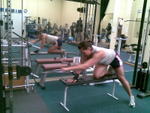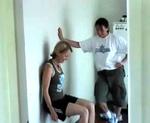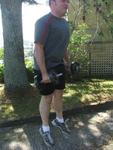Try refreshing your training routine with some of the following strategies.
Vary your training program

Try working out with exercises you really enjoy rather than those programmed into a particular workout. Go ahead and do 12 sets of biceps curls, or 16 sets of seated cable rows. The point is that it's worthwhile, even beneficial, to mix it up on occasion. There are many overload techniques that can stimulate a routine. I have seen to many clients that have done the same routine for 6mths or more, without change.
Another suggestion for maintaining mental and physical freshness is to work out at a different gym every so often. The new environment may force you to pick and choose altogether different pieces of equipment for your workout, resulting in surprised (and invigorated) muscles by the end of your session. Variety is the spice of a good training program.
Hiring a Personal Trainer

Hiring a good personal trainer is the best investment in your physique you can make. In addition to offering motivation, he's providing form tips, suggesting alternative approaches, adjusting your goals and, most important, critically assessing your progress.
If you are worried about the cost talk to the trainer there are varying packages depending on what you want and also what you save in misspent supplementation should see you right for a half dozen sessions.
The free alternative to the personal trainer is a training partner. A well-chosen partner can offer the same benefits as a trainer (although he'll probably swear at you more often). And knowing that she/he's waiting for you at the gym for each scheduled workout will prompt you to avoid missing gym time.
Vary your workout patterns
To prevent your muscles from adapting to the stresses(your muscles adapt after about six weeks of the same exercises) placed on them, try training different combinations of body parts. One way is to organise your workouts into a push-pull system or upper lower. On push days you would train chest, shoulders and triceps, and on pull days, back and biceps. On the third day of the cycle, you'd hit legs. Or you could train arms together, then chest, back, legs and shoulders each on separate days (be sure to leave at least one day between shoulders and back to avoid overstressing your shoulders).
Listen to your body

Are you cranky and easily irritated? Do you look for excuses to skip workouts? Are you overly sore and fatigued? Are you having trouble sleeping?
Are your weights going backward?
If you start to experience any of these symptoms, you're either headed into overtraining syndrome or you've already arrived.
First step? Back off from training; depending on the severity of the symptoms, take some time off -- one, two, three days, even two weeks if necessary.

Next, evaluate your nutrition program. Is your diet nutrient-dense enough to support heavy training efforts? Is there an appropriate balance of macronutrients (carbs, proteins and fats) and micronutrients (vitamins and minerals)?
Are you eating often enough to sustain growth and repair?
Do you eat complex carbs and complete proteins within 90 minutes of your workout?
Most clients under eat healthy food for the growth they require.
Last step: Program rest into your schedule.
Rest and sleep put the body into recuperative mode, releasing appropriate growth hormone factors to start repairing the microtrauma of muscle tissue that results from training.
Remember, more is not better, muscles need time to grow
Alter your training cycle

Try creating a simple eight-week training cycle in which you alternate between heavy, medium and light training sessions for each body part. Each time you try a heavy day, push your limit, leaving your medium and light days for building tendon and ligament strength as well as cardio endurance.
At the end of the eight-week cycle, take a week off -- you've earned it, and your body will repay you with improved performance when you start up again. (Rest and Recuperation a must)
Lisa, Go Figure
29 Apr 2010
Reference
Myles Astor, PhD, Ultimate Audio magazine.


